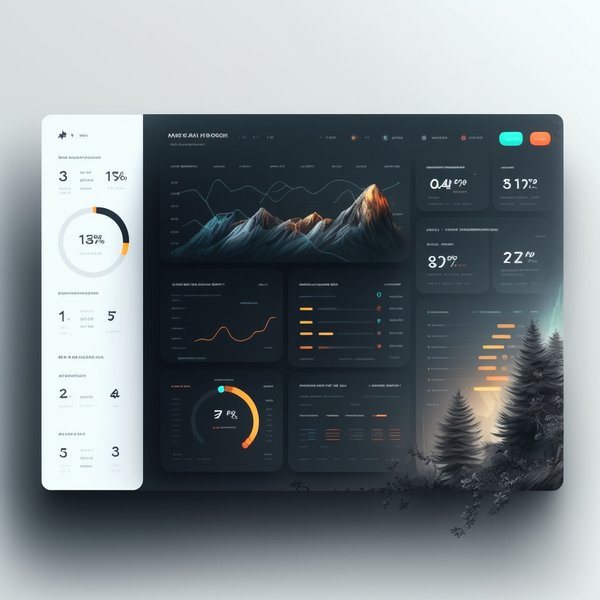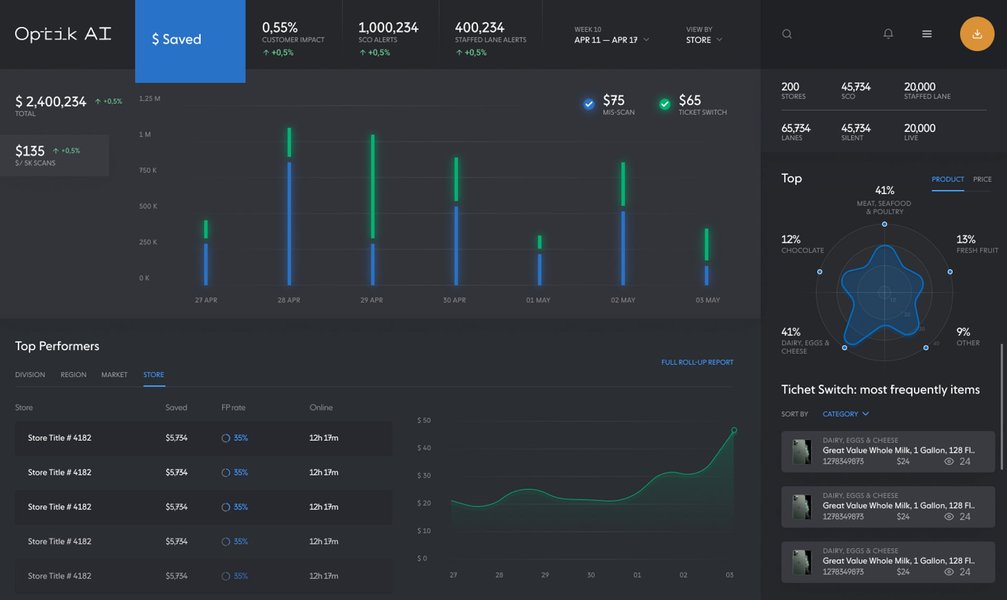
Unveiling the AI Engines & Prompting Paradigms of Modern Web Development Platforms
A deep dive into how Lovable.dev, Bolt.new, Vercel v0, and Hostinger Horizons leverage AI models and system prompts.
The landscape of web development is rapidly transforming, driven by the power of Artificial Intelligence. Several innovative platforms now empower users to create sophisticated web applications using natural language prompts, significantly lowering the barrier to entry and accelerating development cycles. This analysis, current as of Thursday, 2025-05-22, explores the AI models and system prompting mechanisms behind four prominent players in this space: Lovable.dev, Bolt.new, Vercel v0 (v0.dev), and Hostinger Horizons.
Key Insights at a Glance
- AI Model Specificity Varies: While some platforms like Bolt.new openly state their use of specific Large Language Models (LLMs) such as Anthropic's Claude series, others refer more generally to "advanced AI models" or "trusted LLMs."
- Prompting is Paramount: All platforms heavily rely on system prompts and user-provided instructions to guide AI in generating code, UIs, and even backend logic. Strategies range from simple natural language to structured, incremental commands and visual inputs.
- Diverse Focus Areas: Platforms cater to different needs, from Vercel v0's specialization in front-end UI generation to Bolt.new's full-stack development environment control and Hostinger Horizons's emphasis on no-code accessibility.
Platform Deep Dive: AI Models and Prompting Strategies
Understanding how these platforms operate requires a closer look at their core AI technologies and the ways users interact with them.

Conceptual representation of AI assisting in user interface design.
Lovable.dev
AI Models Utilized
Lovable.dev employs advanced Large Language Models (LLMs) to generate full-stack web applications. While specific proprietary or third-party model names (e.g., from OpenAI or Anthropic) are not always publicly disclosed, the platform's capabilities suggest the use of high-performance LLMs. These models are optimized for translating natural language prompts into code, UI elements, and backend logic. Lovable.dev integrates with various LLM providers and uses carefully curated system instructions to guide the AI effectively.
System Prompts and Prompting Mechanisms
Lovable.dev emphasizes a structured and iterative approach to prompting:
- Incremental Development: Users are encouraged to break down complex application development into logical, smaller steps rather than attempting to build an entire app with a single, massive prompt.
- Scoped and Constrained Prompts: Instructions can be targeted, for example, to modify a specific page or component without affecting other parts of the application.
- Context-Rich Prompts: Providing detailed context, such as design system constraints, user roles, and desired behaviors, helps reduce AI "hallucinations" and improve accuracy. A Product Requirements Document (PRD) and knowledge base are recommended for larger projects.
- Visual Prompts: Users can upload screenshots (e.g., of a broken layout) to visually guide the AI's design adjustments.
- Prompt Library & Debugging: Lovable.dev offers a library of reusable prompt patterns and supports debugging workflows where users can analyze dependencies and refine prompts to resolve errors.
- Integrations: Prompts can instruct the AI to implement functionalities like user authentication via Supabase or payment systems using Stripe.
Bolt.new
AI Models Utilized
Bolt.new, developed by the StackBlitz team, is explicit about its AI model usage. It primarily leverages Anthropic's Claude 3.5 Sonnet and Claude 3.7 Sonnet LLMs for code generation. Its open-source counterpart, Bolt.diy, offers greater flexibility, allowing users to choose from a wider range of models, including those from OpenAI, Ollama, OpenRouter, Gemini, Mistral, and others supported by the Vercel AI SDK.
System Prompts and Prompting Mechanisms
Bolt.new integrates AI deeply into its in-browser development environment:
- Natural Language to Code: Users describe their project requirements in plain English, and the AI generates code for various frameworks like React, Vue, or Next.js.
- AI with Environment Control: A standout feature is that AI models have comprehensive control over the entire development environment, including the filesystem, Node.js server, package manager, terminal, and browser console. This enables AI agents to manage the full application lifecycle.
- Specificity in Prompts: Users are advised to be specific about their desired technology stack (e.g., Astro, Tailwind CSS, ShadCN) in their initial prompts for optimal results.
- Prompt Enhancement: An "enhance prompt" icon is available to help users refine their prompts with AI assistance before submission.
- Full-Stack Capabilities: Users can prompt, run, edit, and deploy full-stack applications directly from their browser.
Vercel v0 (v0.dev)
AI Models Utilized
Vercel v0 is a generative user interface platform designed to produce production-ready React and Tailwind CSS code from natural language prompts. While Vercel doesn't explicitly name the specific LLMs, it is described as an "AI-powered pair programmer" utilizing "AI technology." It's likely based on advanced models, potentially from OpenAI or custom in-house solutions, optimized for front-end code generation. Leaked system prompts available on platforms like GitHub offer some insight into its AI configuration.
System Prompts and Prompting Mechanisms
Vercel v0 focuses on streamlining front-end development:
- UI Generation Focus: Prompts are primarily used to generate UI components, pages, and basic front-end logic. It excels at creating landing pages and scaffolding UI elements.
- Production-Ready Code: The AI is instructed to produce clean, modern React and Tailwind CSS code suitable for rapid prototyping and integration into projects.
- Natural Language Input: Users provide clear, concise prompts specifying UI layout, interactivity, and styling requirements.
- Prototyping Tool: The goal is to enable anyone, regardless of coding expertise, to participate in prototyping and expressing new web design ideas.

Example of an AI-driven dashboard, showcasing the type of interfaces these tools can help build.
Hostinger Horizons
AI Models Utilized
Hostinger Horizons positions itself as an all-in-one AI partner—acting as a designer, developer, and copywriter—to build websites and web applications without requiring coding. It runs on "trusted LLMs and cutting-edge tools." The specific names of these LLMs are not publicly disclosed, but they likely involve established third-party models or custom-trained AI, capable of handling design, development, and content generation tasks.
System Prompts and Prompting Mechanisms
Hostinger Horizons aims for a beginner-friendly, conversational AI experience:
- Multi-Modal Input: Users can describe their ideas in plain text or by uploading images and sketches, which the AI uses to design, develop, and write content.
- Conversational Adjustments: Users interact with an AI agent to make real-time adjustments and improvements through simple prompts, such as tweaking layouts, changing copy, or adding new features.
- No-Code Focus: The platform is designed to enable anyone to turn an idea into a working app without technical expertise.
- Integration Capabilities: It can integrate with third-party APIs and services like Stripe for payments, allowing users to specify these needs in their prompts.
- Versatile Application Generation: Capable of generating various web apps and websites, including booking systems, calculators, dashboards, and SaaS products.
Comparative Overview
The following table summarizes the key characteristics of these AI-powered web development platforms:
| Platform | Primary AI Models | System Prompt Style | Focus Area | Notable Features |
|---|---|---|---|---|
| Lovable.dev | Advanced LLMs (specifics not always public) | Structured, scoped, incremental prompts; Visual input; Prompt library | Full-stack web app development (SaaS, complex apps) | Integrations (Stripe, Supabase), debugging workflows, emphasis on PRDs |
| Bolt.new | Anthropic Claude 3.5 & 3.7 Sonnet (Bolt.diy supports more) | Natural language; Full environment control; Tech stack specification; Prompt enhancement | Full-stack in-browser development | AI controls filesystem, server, terminal; Open-source option (Bolt.diy) |
| Vercel v0 | Generative AI models (specifics not public, optimized for UI) | Natural language for UI/component generation | Front-end React + Tailwind CSS code generation, prototyping | Production-ready code, integration with Vercel ecosystem, "AI pair programmer" |
| Hostinger Horizons | "Trusted LLMs" & cutting-edge tools (specifics not public) | Conversational; Natural language & visual prompts (sketches, images) | No-code/low-code full web app creation | All-in-one AI (design, dev, copy), real-time adjustments, API integrations, beginner-friendly |
Platform Capabilities Radar
This radar chart offers a visual comparison of the platforms across key AI-driven development attributes. The scores are based on an interpretation of the available information and reflect relative strengths. A higher score indicates a stronger perceived capability in that dimension.
Visualizing the AI Web Dev Ecosystem
This mindmap illustrates the interconnectedness of AI technologies, prompting strategies, and the development platforms discussed, leading to the creation of web applications.
Incremental, Visual"] id2_1_3["Focus: Full-stack, SaaS"] id2_2["Bolt.new"] id2_2_1["Models: Claude 3.5/3.7 Sonnet,
Bolt.diy (multi-LLM)"] id2_2_2["Prompts: Natural Language,
Environment Control"] id2_2_3["Focus: Full-stack in-browser"] id2_3["Vercel v0"] id2_3_1["Models: Generative AI (UI focus)"] id2_3_2["Prompts: Natural Language for UI"] id2_3_3["Focus: Front-end (React, Tailwind)"] id2_4["Hostinger Horizons"] id2_4_1["Models: 'Trusted LLMs'"] id2_4_2["Prompts: Conversational,
Text & Visual"] id2_4_3["Focus: No-code full apps"] id3["Key Outcomes"] id3_1["Rapid Prototyping"] id3_2["Code Generation (Frontend/Backend)"] id3_3["UI/UX Design Assistance"] id3_4["Democratized Development"] id4["Common Features"] id4_1["Integrations (Stripe, Supabase)"] id4_2["Debugging Support"] id4_3["Deployment Assistance"]
Video Insights: Mastering AI Prompts for Development
Effective prompting is crucial for maximizing the potential of these AI-driven development tools. The following video offers guidance on how to write perfect prompts for various platforms, including some of those discussed, which can significantly enhance your development workflow and the quality of AI-generated outputs.
Learn techniques for writing effective prompts for AI code generation tools.
Frequently Asked Questions (FAQ)
Conclusion
AI-powered web development platforms like Lovable.dev, Bolt.new, Vercel v0, and Hostinger Horizons are revolutionizing how applications are created. They leverage sophisticated AI models and increasingly refined system prompting mechanisms to translate human language into functional code and user interfaces. While transparency regarding specific AI models varies, the emphasis across all platforms is on empowering users through intuitive interaction and intelligent automation. As these technologies continue to evolve, the synergy between human ingenuity and artificial intelligence will undoubtedly lead to even more powerful and accessible development tools.
Recommended Further Exploration
- How do AI web development tools compare for building e-commerce websites with payment integrations?
- What are the future trends in AI code generation and how might they impact the roles of software developers?
- What are the security considerations and best practices when using AI to generate application code?
- Can you provide a deep dive into advanced prompt engineering techniques for AI-assisted software development?